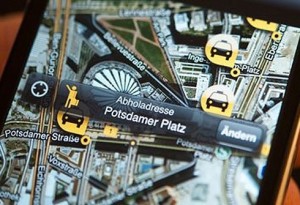 MANY cabbies pay a dispatcher to keep the fares coming. The dispatchers are an information clearing-house, offering customers a central point of contact and offering on-the-move drivers directions to the nearest prospective passenger. But location-enabled smartphones in the pockets of more customers, and on the dashboards of more drivers, offer a tempting way to skip the middleman. If, that is, customers and drivers can find a handy way to share their locations.
MANY cabbies pay a dispatcher to keep the fares coming. The dispatchers are an information clearing-house, offering customers a central point of contact and offering on-the-move drivers directions to the nearest prospective passenger. But location-enabled smartphones in the pockets of more customers, and on the dashboards of more drivers, offer a tempting way to skip the middleman. If, that is, customers and drivers can find a handy way to share their locations.
Enter the app developer. In Sweden, Germany, Spain and Britain this new breed of middleman has released a slew of taxi-finding apps in recent years. When a customer requests a taxi, the applications ping the nearest available driver. He can accept the fare, paying a small commission, or skip it. Some applications offer customers an estimate of the fare, ratings of potential drivers or, once a match is made, a moving blip on the map, showing their drivers’ progress. All this is especially useful for visitors unfamiliar with a city or late-night revellers uncertain of their street address.


